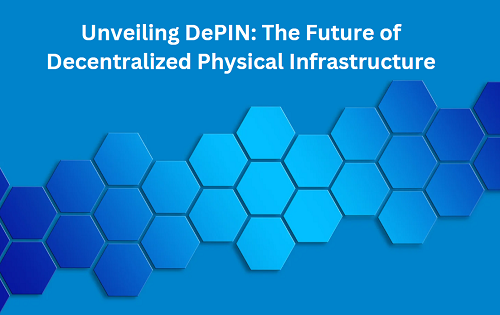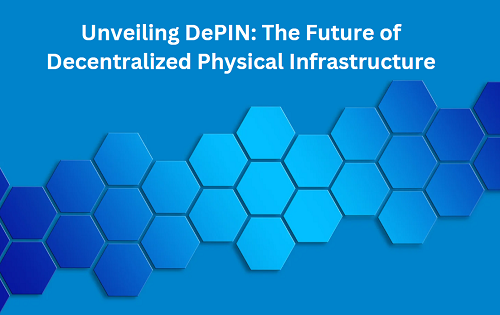


In the rapidly evolving landscape of technology and blockchain, DePIN, or Decentralized Physical Infrastructure Networks, is emerging as a groundbreaking paradigm. DePIN leverages the principles of decentralization to revolutionize how physical infrastructure is managed, owned, and operated. This article explores the essence of DePIN, its foundational blockchains, categories, growth potential, and its implications for the cryptocurrency space.
DePIN stands for Decentralized Physical Infrastructure Networks. At its core, DePIN integrates decentralized technologies, such as blockchain, with physical infrastructure to create systems that are more resilient, transparent, and efficient. Unlike traditional infrastructure models that rely on centralized control, DePIN utilizes a distributed network of nodes to manage and operate infrastructure assets. This decentralization helps to mitigate single points of failure, reduce costs, and foster greater innovation.
The backbone of DePIN is its underlying blockchain technology. Several blockchain platforms are instrumental in enabling DePIN's functionality. These include:
Ethereum: Known for its smart contract capabilities, Ethereum allows for programmable interactions with infrastructure assets, enabling automated management and operations.
Polkadot: With its interoperability features, Polkadot facilitates the integration of various blockchains within DePIN, enhancing scalability and cross-chain communication.
Solana: Offering high-speed transactions and low costs, Solana supports DePIN applications that require rapid and efficient data processing.
Cosmos: By enabling different blockchains to interoperate, Cosmos enhances DePIN's ability to connect various infrastructure systems seamlessly.
These blockchains provide the decentralized ledger, smart contract functionalities, and scalability required for managing and interacting with physical infrastructure in a decentralized manner.
DePIN encompasses several categories, each addressing different aspects of infrastructure:
Decentralized Energy Networks: These include decentralized energy grids and peer-to-peer energy trading systems. By leveraging blockchain, these networks enable more efficient energy distribution and greater control for users.
Decentralized Transportation: This category involves the creation of decentralized ride-sharing platforms and autonomous vehicle networks. Blockchain technology ensures secure, transparent, and efficient transactions within these systems.
Decentralized Real Estate: Tokenization of real estate assets allows for fractional ownership and trading on blockchain platforms. This approach democratizes access to real estate investments and simplifies transactions.
Decentralized IoT Infrastructure: Integrating IoT devices with blockchain enables secure, decentralized data collection and management, enhancing the efficiency of smart cities and industrial applications.
The growth potential of DePIN is substantial. As technology advances and the demand for more resilient and efficient infrastructure solutions increases, DePIN stands to transform multiple sectors. Key growth drivers include:
Increased Demand for Transparency: DePIN offers unparalleled transparency in infrastructure management, appealing to stakeholders who seek to verify and audit operations in real time.
Cost Efficiency: By reducing the need for intermediaries and leveraging decentralized networks, DePIN can lower operational costs and increase overall efficiency.
Scalability: With the ability to expand and integrate various infrastructure components, DePIN can scale effectively to accommodate growing populations and urbanization.
Innovation: The decentralized nature of DePIN fosters innovation by allowing developers and entrepreneurs to create new solutions and applications without traditional constraints.
DePIN's rise signifies a significant evolution in the intersection of blockchain technology and physical infrastructure. For the cryptocurrency space, this presents several implications:
New Investment Opportunities: DePIN opens new avenues for crypto investors, particularly through tokenized infrastructure assets and decentralized applications (dApps).
Increased Adoption of Blockchain: As DePIN solutions become more mainstream, the adoption of blockchain technology is likely to accelerate, broadening its use beyond traditional financial applications.
Regulatory Challenges: The integration of decentralized networks with physical infrastructure may attract regulatory scrutiny, necessitating a proactive approach to compliance and legal considerations.
Enhanced Security and Privacy: The decentralized model enhances security and privacy, addressing some of the key concerns associated with centralized infrastructure systems.
DePIN did not emerge in isolation; it evolved from earlier decentralized technologies and infrastructure models. The concept builds on the foundational principles of blockchain, which initially disrupted financial transactions and digital assets. Over time, the scope of blockchain applications expanded to include physical infrastructure, driven by the need for more resilient and efficient systems.
Several DePIN projects exemplify the practical applications of this technology:
Power Ledger: This platform facilitates decentralized energy trading, allowing users to buy and sell energy directly through a blockchain-based system.
Helium: Helium's decentralized wireless network leverages blockchain to create a global network of low-power, wide-area network (LPWAN) devices.
RealT: A platform for tokenized real estate, RealT allows users to invest in fractional ownership of real estate properties via blockchain.
The technological foundations of DePIN include:
Consensus Mechanisms: Various consensus mechanisms, such as Proof of Stake (PoS) and Delegated Proof of Stake (DPoS), ensure the integrity and security of decentralized networks.
Cryptographic Techniques: Cryptography secures transactions and data, protecting against fraud and ensuring privacy within DePIN systems.
Smart Contracts: These self-executing contracts automate transactions and operations, reducing the need for intermediaries and increasing efficiency.
DePIN faces several challenges, including:
Regulatory Uncertainty: As DePIN intersects with physical infrastructure, navigating the regulatory landscape becomes complex, requiring ongoing dialogue with policymakers.
Economic Viability: Ensuring the economic sustainability of DePIN projects is crucial, particularly in balancing costs and benefits for stakeholders.
Scalability Issues: As DePIN systems grow, addressing scalability challenges is essential to maintaining performance and efficiency.
Comparing DePIN with traditional infrastructure models reveals key differences:
Efficiency: DePIN's decentralized approach reduces inefficiencies and operational costs associated with centralized systems.
Resilience: The distributed nature of DePIN enhances resilience by eliminating single points of failure.
Transparency: Blockchain's transparency features provide greater visibility into operations and management compared to traditional systems.
Looking ahead, DePIN is poised to benefit from several trends:
Integration with AI and Machine Learning: Combining DePIN with AI can enhance automation and predictive capabilities within infrastructure systems.
Expansion into New Sectors: DePIN's principles may extend to additional sectors, such as healthcare and education, further broadening its impact.
Enhanced Interoperability: Continued advancements in blockchain technology will improve interoperability between different DePIN systems and networks.
DePIN's impact on society and the economy is profound:
Empowering Individuals: DePIN democratizes access to infrastructure assets, empowering individuals and communities to participate in and benefit from infrastructure management.
Driving Economic Growth: By fostering innovation and creating new business opportunities, DePIN can stimulate economic growth and job creation.
Improving Quality of Life: Efficient and resilient infrastructure enhances the quality of life by providing reliable services and reducing costs.
In conclusion, DePIN represents a transformative shift in how physical infrastructure is managed and operated. By harnessing the power of decentralized technologies, DePIN promises to deliver more transparent, efficient, and resilient infrastructure solutions. As the technology continues to evolve, it will undoubtedly shape the future of both blockchain and infrastructure, offering new opportunities and challenges for the cryptocurrency space and beyond.
Disclaimer: This article is provided for informational purposes only. It is not offered or intended to be used as legal, tax, investment, financial, or other advice.
